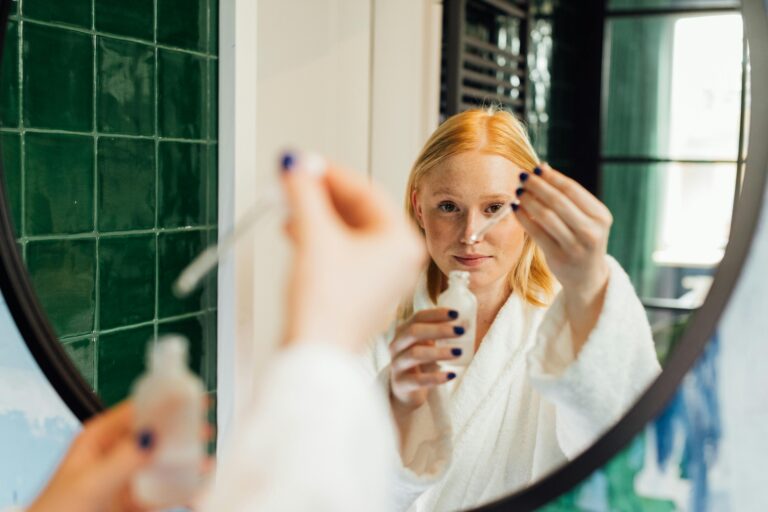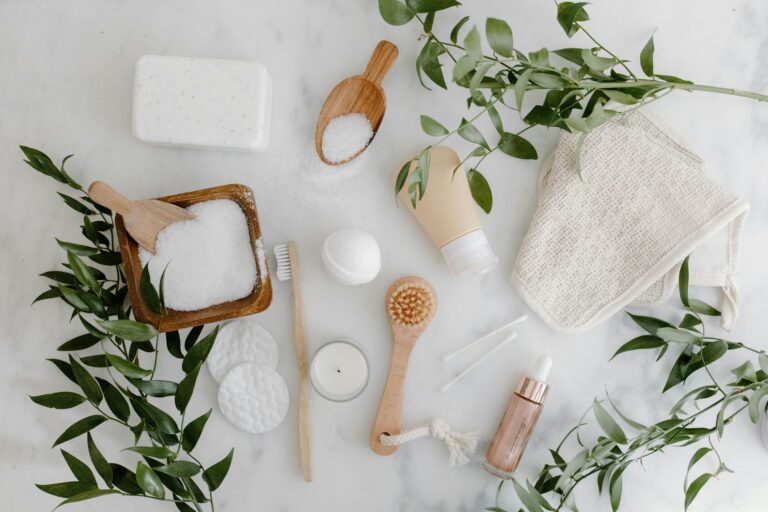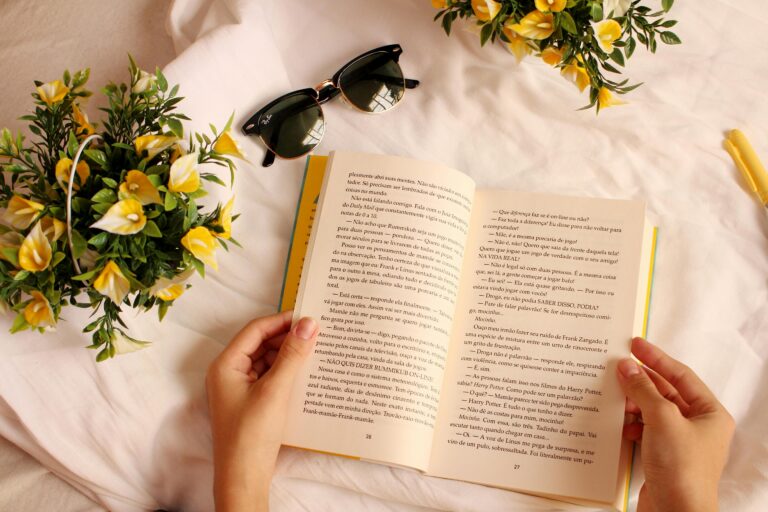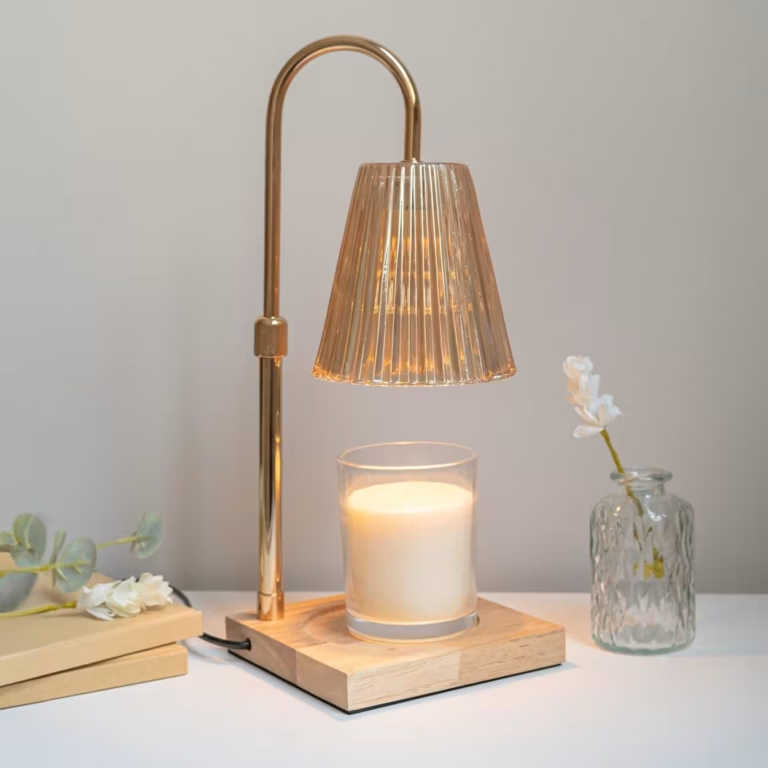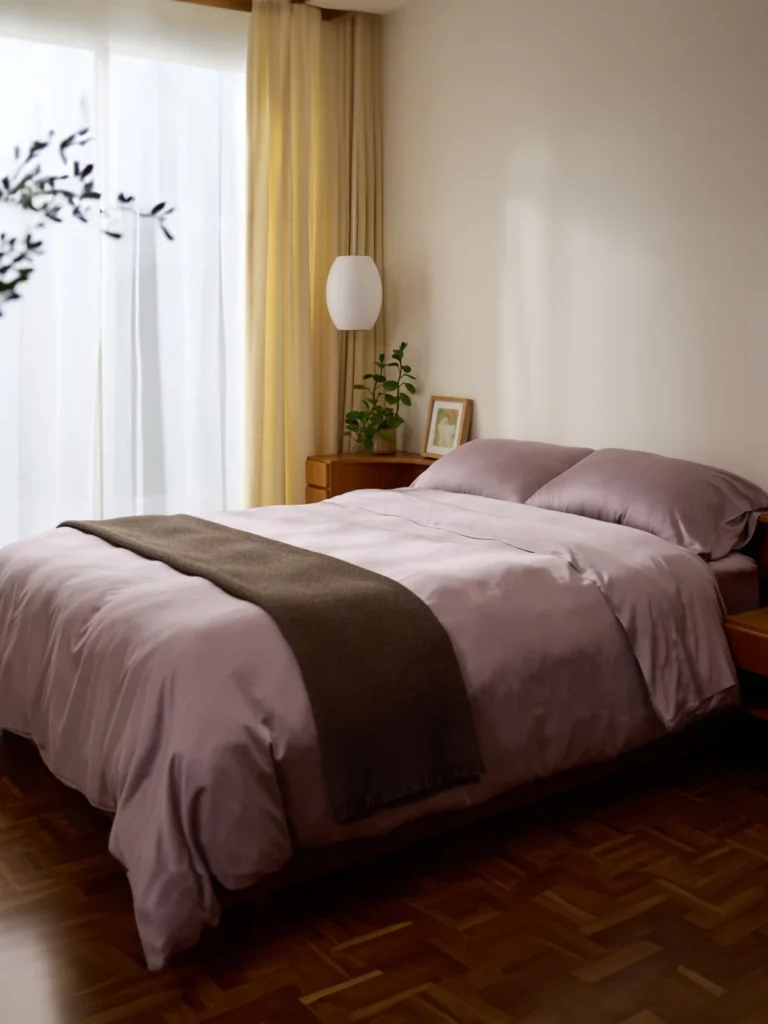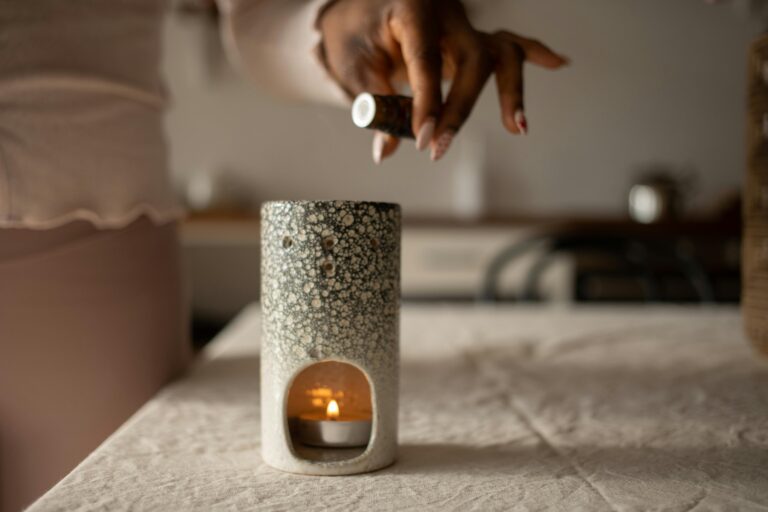How to Build a Bedtime Routine – 6 Tips for a better sleep
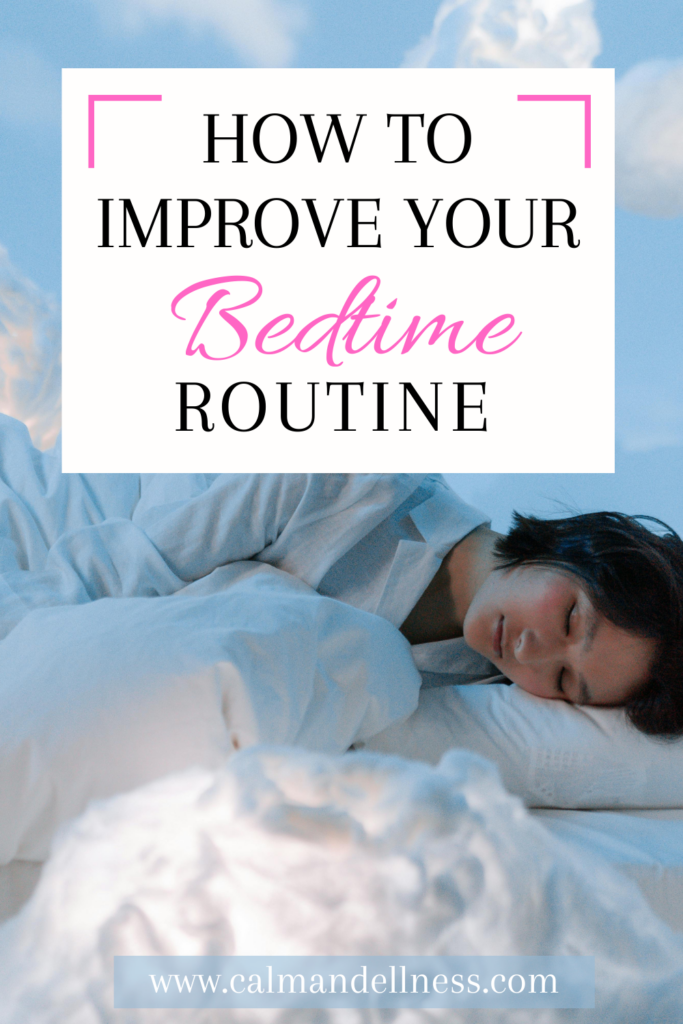

Ever find yourself lying in bed, staring at the ceiling, wondering why sleep seems to come so easily to others but not to you? The secret might be as simple as creating—or improving—your bedtime routine!
Designing Your Perfect Night Routine: Step-by-Step
In the last five years, I have struggled with falling asleep and having an uninterrupted night’s sleep.
My mind would race the moment my head hit the pillow, replaying conversations from the day or worrying about the next morning’s tasks at work (one of my biggest source of anxiety).
When I was too tired to read a good book, I’d scroll through my phone, thinking a few minutes of social media would help me relax—only to find myself wide awake hours later, exhausted and frustrated.
I had always known the importance of a structured bedtime routine, but over the years, I let bad habits take over. Scrolling on my phone, watching Netflix, and pushing my bedtime later and later became the norm. I kept telling myself I’d fix it “someday,” but that day never seemed to come—until one Monday night when I finally had enough.
I decided to start small. I set a consistent bedtime, dimmed the lights an hour before sleep, and swapped my phone for a book. If I was too tired to read, I simply sat in the dim light, jotting down a few thoughts in my journal or playing with my cat. The first few nights were challenging—my legs felt restless, and my mind resisted the change. But I stuck with it.
Within a week, something shifted. I started falling asleep faster and waking up feeling refreshed. Journaling became a regular habit, helping me clear my mind and release the day’s stress. My mood improved, my anxiety lessened, and for the first time in years, I actually looked forward to bedtime.
Based on experts articles this is a sum up of good beheviours to follow:
1. Set a Consistent Bedtime

Here’s the truth to make a bed time routine work: your body craves consistency. Going to bed at 10 PM one night and 2 AM the next is like giving yourself constant jet lag. Aim to:
- Choose a bedtime that allows for 7-8 hours of sleep: Look at your schedule and work backward from when you need to wake up. If you need to be up at 6 AM, aim to be in bed by 10 PM to give yourself time to fall asleep and get a full night’s rest.
- Stick to this schedule: It’s tempting to stay up late and sleep in on weekends, but keeping your sleep schedule consistent helps maintain your body’s natural rhythm. Try not to deviate by more than an hour from your usual bedtime.
- Set a bedtime reminder 30 minutes before you want to sleep: Use this time as your wind-down period. When the alarm goes off, start wrapping up your activities and begin your bedtime routine.
2. Create a Technology-Free Zone
Let’s be honest – we’re all guilty of late-night scrolling, but why this is bad?
Blue light emitted by phones, tablets, and computers interferes with your sleep hormones, basically it tricks your brain into thinking it’s still daytime, suppressing the production of melatonin, your sleep hormone (Harvard Medical School, 2018)
How to Reduce Blue Light Before Bed
✅ Set a “screen curfew” – Stop using electronic devices at least 60 minutes before bedtime.
✅ Use blue light filters – Activate Night Shift (iOS), Night Mode (Android), or f.lux on your computer.
✅ Switch to warm lighting – Use a salt lamp or dimmable warm-toned LED lights to create a sleep-friendly atmosphere.
✅ Try blue-light-blocking glasses – If you must use screens, wear blue-light-blocking glasses to reduce the impact on your sleep cycle.
Bonus Tip: Swap your nightly Netflix binge for a bedtime book or a relaxing podcast—your brain will thank you!
Common Mistake: Thinking “dark mode” is enough. While dark mode helps with eye strain, it doesn’t fully block blue light exposure. Instead, use red-light filters or glasses for better results.
Also:
- Social media often leads to comparison and overthinking, that quick check of Instagram can turn into an hour of scrolling, leaving you feeling anxious and your mind racing with thoughts about others’ lives instead of relaxing.
- Screen time before bed can cause headaches and eye strain, the intense focus on close-up screens in the dark can lead to physical discomfort that makes it harder to fall asleep.
3. Set the Stage for Sleep

A bedtime routine isn’t just about what you do—it’s about how you feel. Your bedroom isn’t just a room; it’s an experience. Creating the right atmosphere can make all the difference in winding down and setting the stage for a restful night.
- Cool (between 60-67°F is optimal): This temperature range helps your body naturally cool down, which is essential for falling asleep. If you can’t control the exact temperature, use fans or adjust your bedding seasonally.
- Comfortable (invest in good bedding): Quality sheets, pillows, and mattresses aren’t just luxuries – they’re investments in your sleep health. Choose materials that breathe well and feel comfortable against your skin.
- Dark (consider blackout curtains): Even small amounts of light can disrupt your sleep. Blackout curtains or an eye mask can help create the perfect dark environment your body needs for quality rest.
- Quiet (or use white noise/rain sounds): If you can’t control external noise, a white noise machine or fan can create a consistent sound barrier that helps mask disturbing sounds and lull you to sleep.
Your surroundings don’t just affect your mood—they define it. Explore our tips and suggestions to transform your home, one room at a time, into a more serene and peaceful space.
4. Mind What You Consume Before Bed
For a good bedtime routine timing is everything when it comes to food and drinks:
1. Cut off caffeine early in the afternoon
That 3 PM coffee might help you power through the workday, but it could still be affecting you at bedtime. Try to stop caffeine intake by 2 PM, or switch to decaf options after lunch. Caffeine is a stimulant that can significantly disrupt sleep if consumed too close to bedtime. A study in the Journal of Clinical Sleep Medicine found that consuming 400 mg of caffeine even six hours before bedtime can reduce total sleep time by more than an hour.
2. Void heavy meals 2-3 hours before bed
Large meals close to bedtime make your body focus on digestion instead of preparing for sleep. If you’re hungry, opt for a light snack like a banana or a small handful of almonds.
3. Try sleep-friendly evening drinks like
- Chamomile tea: Known for its calming properties, this herb can help reduce anxiety and promote sleepiness
- Lavender tea: This aromatic tea helps relax both mind and body, making it easier to drift off to sleep
- Decaf ginger tea: Helps settle your stomach and provides a warming, calming effect without any caffeine
Also, there are a variety of plants known to improve sleep quality while being safe to keep in your bedroom. These plants not only enhance air quality but also create a calming ambiance that promotes restful sleep.
5. Add Self-Care Elements to your Bed time Routine
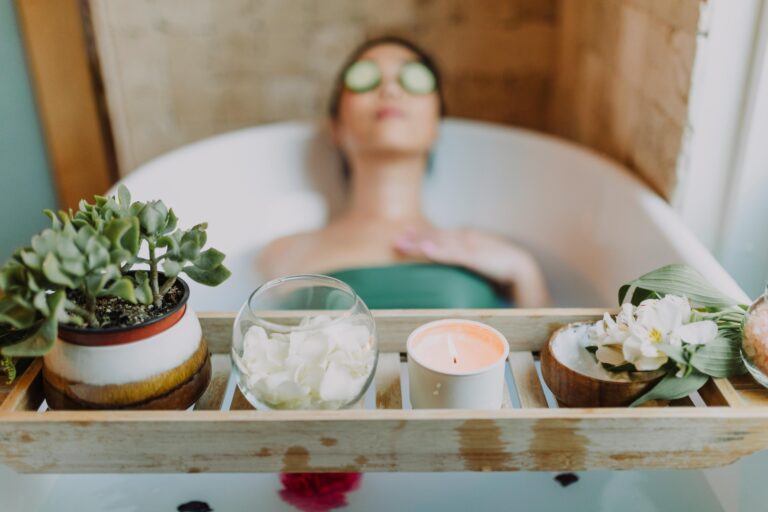
Indulge in rituals that melt away stress:
✅ Take a warm shower or relaxing bath: The drop in body temperature after you get out actually helps trigger sleepiness. Add some lavender bath salts for extra relaxation.
✅ Do gentle stretches or bedtime yoga: Focus on gentle movements that release tension from your body. Even 5-10 minutes can make a difference in how well you sleep.
✅ Practice skincare routines: The act of caring for your skin can be meditative, plus the gentle massage of applying products helps relax facial muscles.
✅ Write a journal: Ending your day focusing on the positive helps quiet anxious thoughts and puts you in a peaceful mindset for sleep.
✅ Read a physical book: Choose something enjoyable but not too exciting – this isn’t the time for heart-racing thrillers.
✅ Listen to calming music: Soft instrumental music or nature sounds can help slow your heart rate and prepare you for sleep.
✅Step outside for fresh air before bed: A quick moment outside helps reset your mind and can make your bedroom feel even more cozy when you return.
6. Prepare for Tomorrow
A good bedtime routine is projected to tomorrow! Reduce morning stress by:
- Laying out clothes for the next day: Take the decision-making out of your morning routine by choosing your outfit, including accessories and shoes, the night before.
- Preparing lunch and bags: Pack your work bag, gym bag, or kids’ school bags. Make lunches or at least plan what you’ll pack to streamline your morning.
- Writing down your top priorities: A quick to-do list for tomorrow helps clear your mind and prevents you from lying awake worried about forgetting something important.
- Setting out workout gear if needed: If you exercise in the morning, having everything ready to go makes it much easier to follow through with your fitness goals.
7. Creating a Bedtime Routine Work for You
Remember, this isn’t about following every single suggestion perfectly. It’s about creating a bed time routine that fits your life. Start with one or two changes and build from there. The key is consistency and finding what works for your schedule and lifestyle.
Quick Tips about creating a Bedtime Routine
- Start small – don’t try to change everything at once: Pick one or two elements that seem most manageable and focus on those until they become habits.
- Give new habits at least two weeks to stick: Your body and mind need time to adjust to new routines, so be patient with yourself as you build these healthy habits.
- Be flexible when life gets in the way: Some nights won’t go as planned, and that’s okay. Having a flexible mindset helps you get back on track without guilt.
- Focus on progress, not perfection: Celebrate the small wins and improvements rather than aiming for a perfect routine every single night.
The Bottom Line
Creating a bed time routine isn’t about following a strict set of rules – it’s about giving yourself the gift of better rest and self-care. Your perfect routine might look different from someone else’s, and that’s okay. The best routine is one you can stick to consistently.
If you keep waking up at night and have no clue why, don’t worry—you’re not alone! Check out the 9 most common reasons people struggle with disrupted sleep and see if any of them might be the culprit.
Thank you for reading, and if you enjoyed, tell a friend about Calm&Wellness and check out the related posts. I hope to see you soon!
RELATED POSTS


